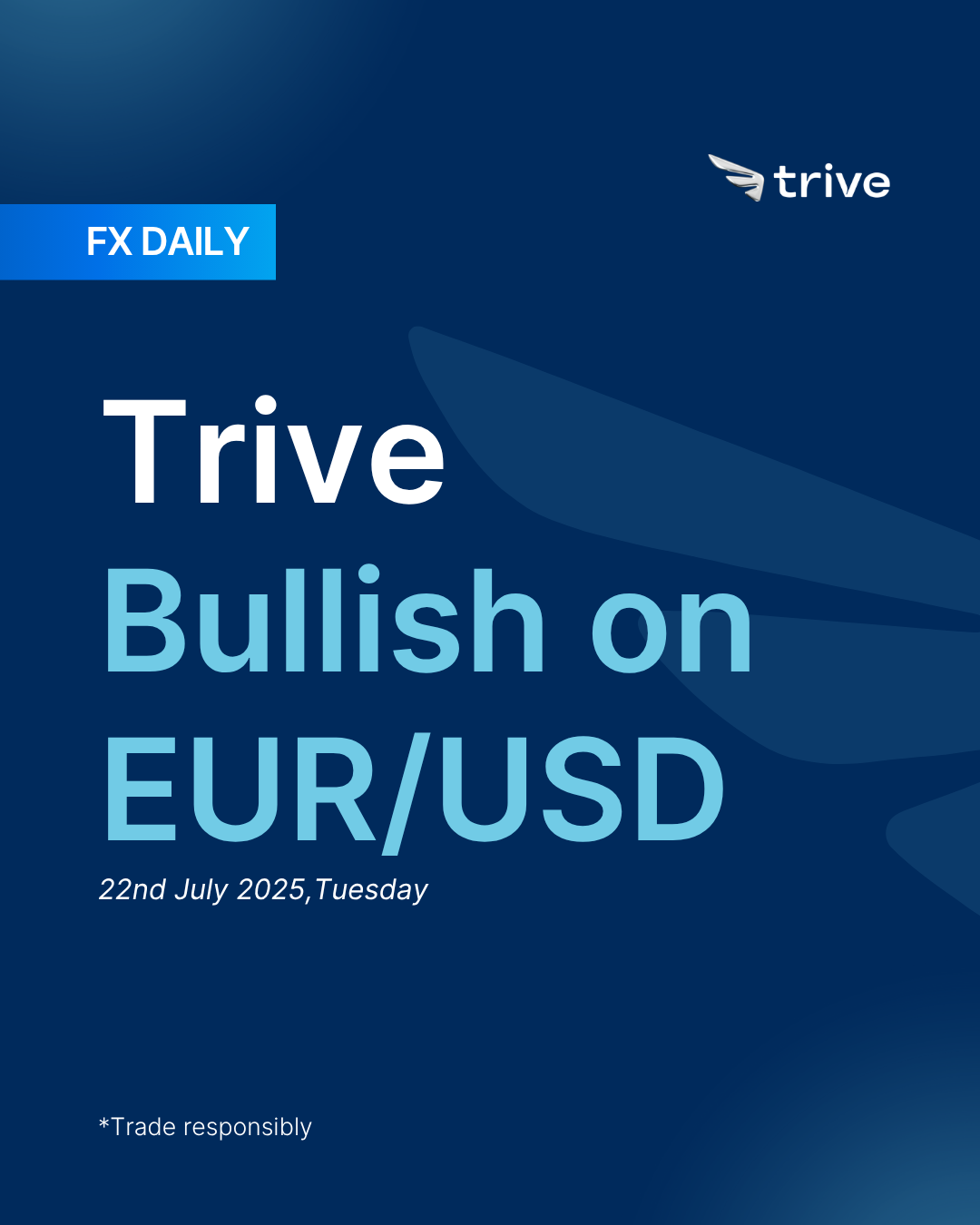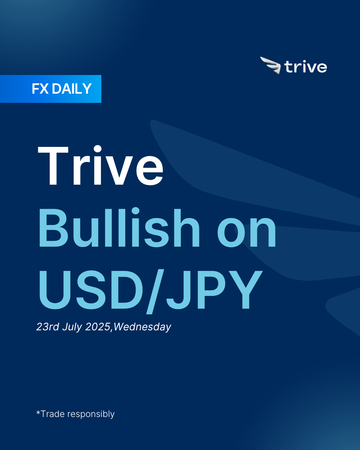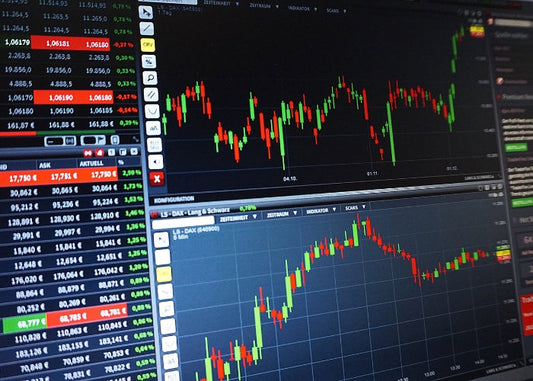FX Daily: Trive Bullish on EUR/USD

EUR/USD outlook has turned bullish despite near-term headwinds. While tariff threats from the U.S. have pressured the euro, portfolio flows continue to favor the eurozone as investors diversify away from USD assets. The ECB is expected to hold rates steady, but not turn dovish, and if PMIs this week remain solid, it could reinforce euro strength. German openness to compromise and ongoing trade talks lower tail risks. With the Fed facing political pressure and policy uncertainty, and U.S. inflation stickiness reducing rate-cut urgency, the EUR/USD pair is supported above 1.1550, with room to climb on positive European data and resilient sentiment.
EUR: ECB not a game changer this week
The Euro had a tough week, falling to its lowest level since late June as the risk of a trade war with the United States weighed heavily on the currency. The Euro’s direction was mostly driven by developments in the US, especially after President Trump threatened to impose 30% tariffs on EU goods starting August 1st. Even though negotiators on both sides worked on finding a solution, the approaching deadline and concerns voiced by ECB officials about the potential economic fallout kept the Euro under pressure. EUR/USD dropped to a low near 1.1555 before managing a slight recovery.
The main issue affecting the Euro was the looming tariff threat. President Trump’s warning over the weekend to slap 30% tariffs on EU imports if no deal is reached created immediate tension. EU officials strongly rejected the threat, calling the proposed measures unacceptable and damaging to mutual trade. In response, the EU adopted a dual strategy. On one hand, negotiations continued, with EU Trade Commissioner Maroš Šefčovič traveling to Washington for intense talks, acknowledging that the final stages are always the hardest. On the other hand, the EU prepared for a possible escalation, reportedly drafting retaliatory tariffs on billions of dollars’ worth of US goods like aircraft and alcohol. They also considered broader actions such as tariffs on US services and tighter export controls.
Despite the hostile tone, several EU members still supported a diplomatic resolution. In a possible sign of compromise, German Chancellor Friedrich Merz expressed openness to accepting an uneven trade deal if it meant securing lower tariff rates, even if the terms appeared unbalanced.
The tariff risk also influenced ECB policy thinking. Sources suggested the central bank would discuss a more negative economic scenario in its upcoming July meeting due to the escalating trade tensions. Although risks are rising, the ECB is still expected to keep rates steady in July, as officials are not ready to act based on a threat alone. As a result, markets have now shifted their expectations for the next rate cut to September. This view was also echoed by analysts at UBS and Citi.
ECB officials repeatedly warned about the economic impact of possible tariffs. Bundesbank President Nagel said a recession in Germany in 2025 couldn’t be ruled out if the tariffs go through. Meanwhile, Dimitar Radev, who is about to join the ECB’s Governing Council, took a more cautious stance, saying the bar for further rate cuts should remain high.
Economic data in the Eurozone played a secondary role this week. May’s industrial production rose 1.7% month-on-month, which was a solid number, and June’s final inflation reading confirmed headline inflation at the ECB’s 2.0% target. However, construction output dropped by 1.7% in May. In Germany, the ZEW survey showed that economic sentiment improved more than expected in July, but this failed to lift the Euro amid all the trade noise.
On the political front, France and the EU both faced budget-related tensions. In France, Prime Minister Bayrou unveiled a new budget aimed at cutting the deficit, but it was immediately met with the threat of a no-confidence vote. At the EU level, Germany officially rejected the European Commission’s proposal for a nearly €2 trillion budget for 2028 to 2034, setting up what will likely be a difficult round of negotiations.
The ECB is widely anticipated to leave interest rates untouched next week, meaning the markets will be paying close attention to any changes in guidance or economic projections. While the ECB might adopt a more positive tone on euro area growth, they’re still likely to flag external threats tied to international trade and political tensions. President Lagarde might continue to highlight the euro’s growing international relevance, though she could also point out that a stronger currency isn’t without its own set of challenges.
We believe the EUR still has room to strengthen as portfolio flows continue to support its outperformance, especially with Europe actively reallocating away from US assets. Flows have become a bigger driver of EUR/USD than traditional cyclical factors, which is why we see ongoing support for the Euro in the current environment.
Our bullish baseline bias is based on the assumption that PMIs on Thursday don’t suddenly show a significant deterioration and that the ECB doesn’t deliver a dovish meeting.
USD: Limited bounce
The US Dollar had a turbulent week, caught between growing signs of tariff-driven inflation and a dramatic political standoff over the Federal Reserve’s independence. The DXY index started the week strong, continuing its previous momentum as President Trump threatened to impose 30% tariffs on the EU and Mexico. Mid-week, the dollar gained further strength following a higher-than-expected US CPI report, but that momentum was cut short by rumors that President Trump was preparing to fire Fed Chair Jerome Powell. Although the President quickly denied the claim, which helped reverse the sharpest market reactions, the situation exposed serious tensions around monetary policy. The dollar still ended the week higher, but with added political risk in the background.
Early in the week, inflation data gave mixed signals. Tuesday’s June CPI report triggered a hawkish reaction as Core Goods CPI rose 0.7%, its fastest monthly pace in nearly two years, suggesting that tariff costs were starting to show up in consumer prices. But the following day, the Producer Price Index came in softer than expected, with the core monthly figure flat. This helped cool immediate concerns about inflation, and analysts lowered their forecasts for the Fed’s preferred gauge, Core PCE.
On Thursday, strong economic data pointed to a resilient consumer. June Retail Sales came in well above expectations, rising 0.6% compared to the 0.1% forecast, and jobless claims fell unexpectedly. However, Friday’s University of Michigan survey showed that while consumer sentiment improved, inflation expectations dropped noticeably. Business inventories in May remained flat, suggesting lukewarm momentum on the business side.
The most dramatic development came on Wednesday with reports that President Trump was considering firing Fed Chair Jerome Powell. Markets reacted strongly, with the dollar falling and bond yields dropping on fears that the Fed’s independence was at risk. Although Trump later said it was “highly unlikely” he would actually fire Powell, he also reiterated his wish to appoint someone new when Powell’s term ends. The initial shock quickly faded, but the episode left markets unsettled.
Meanwhile, comments from Fed officials showed growing division within the central bank. Governors Lisa Cook, Michelle Bowman, and Philip Jefferson, along with regional Fed presidents like Loretta Mester, supported a patient and data-driven approach. They pointed to the solid economy and the temporary nature of tariff-related inflation as reasons not to rush into rate cuts. On the other hand, Governor Christopher Waller strongly advocated for a 25 basis point cut in July, arguing the Fed should act early to prevent economic risks from escalating and could ignore short-term tariff inflation.
Market pricing for Fed rate cuts moved up and down all week. After the hot CPI print, expectations for year-end cuts dropped below 45 basis points. The Powell rumors temporarily increased bets on more easing, but by the end of the week, markets were pricing in around 46 basis points of cuts by December. A move in July looked unlikely, but a cut by September remained a focus.
On the geopolitical front, tariffs dominated headlines. President Trump opened the week by threatening 30% tariffs on the EU and Mexico and 100% tariffs on Russia if a peace deal in Ukraine isn’t reached within 50 days. While the extended deadline on Russia was seen as a sign of de-escalation, the EU threat added tension to ongoing trade talks. Negotiations between US and EU officials continued all week but turned sour on Friday amid reports that Trump was demanding a minimum 15–20% tariff on all EU goods and rejected the idea of lowering existing tariffs on cars.
There was also a thaw in US-China relations, as the US approved some Nvidia H20 AI chip sales to China. Commerce Secretary Howard Lutnick linked the move to broader talks over rare earth materials.
Market sentiment shifted throughout the week. Early fears of rising inflation gave way to concerns about political risk and the independence of the Fed. The DXY index reached a high of 98.95 on Thursday, its strongest level since late June, supported by solid data. But it lost momentum after the Powell rumors and dovish comments from Governor Waller, finishing the week up around 0.6% but off its highs. The US Treasury yield curve steepened sharply on Wednesday as markets considered the possibility of a more dovish replacement for Powell, although that move mostly reversed after Trump’s denial.
In the near term, the USD may hold its ground or even extend gains, supported by a resilient US economy, consumer confidence has been rising since May, PMIs remain in expansion, unemployment is stable, and inflation remains sticky .. leaving the Fed in no rush to cut rates.
While markets are watching the potential for a change in Fed leadership, with some concern that a Trump aligned chair could weigh on the dollar, we believe the president’s influence over monetary policy would remain limited. As a result, we don’t view the uncertainty around Powell’s future as a high probability trigger for a sharp, sustained USD selloff.
That said, we maintain a bearish longer-term view, as most G10 currencies have outperformed the dollar year to date beyond what short-term fundamentals would justify, with portfolio flows becoming a dominant force. Europe, in particular, has benefited from reallocations away from US assets, and flows have recently explained more of the EUR/USD move than traditional cyclical factors. Unless new catalysts like deeper or earlier Fed cuts emerge, dollar depreciation may slow from here, but the broader trend still points to weakness as global investors continue to reduce their US exposure.
 EUR/USD 4H
EUR/USD 4H
Disclaimer
This material is provided for informational purposes only and does not constitute financial, investment, or other advice. The opinions expressed in this material are those of the author and do not necessarily reflect the views of Trive International. No opinion contained in this material constitutes a recommendation by Trive International or its author regarding any particular investment, transaction, or investment strategy. This material should not be relied upon in making any investment decision.
The information provided does not consider the individual investment objectives, financial situation, or needs of any specific investor. Investors should seek independent financial advice tailored to their individual circumstances before making any investment decisions. Trive International shall not be liable for any loss, damage, or injury arising directly or indirectly from the use of this information or from any action or decision taken as a result of using this material.
Trive International may or may not have a financial interest in the companies or securities mentioned. The value of investments may fluctuate, and investors may not get back the amount they originally invested. Past performance is not indicative of future results.
For more information about Trive International, please visit http://trive.com/int
Additional Information
Investing involves risk, including the potential loss of principal. Diversification and asset allocation strategies do not ensure a profit or guarantee against loss. The content in this material is subject to change without notice and may become outdated or inaccurate over time. Trive International does not undertake any obligation to update the information in this material.
By accessing this material, you acknowledge and agree to the terms of this disclaimer. If you do not agree with these terms, please refrain from using this information.
No comments
Home
Trive
TriveHub





0 comments